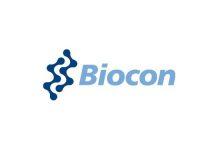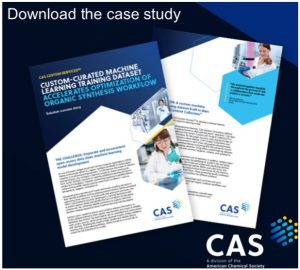Sustainability is not only in terms of complying with environmental regulations, reducing emissions etc. It calls for efficiencies across the entire value chain of manufacturing from the supply chain to the manufacturing process, good maintenance to the end product and its disposal. Emerging digital technologies likes Al, Blockchain, IIoT, data analytics, cloud etc can create a paradigm shift in manufacturing efficiencies that will greatly enable sustainable operations.
Introduction
In today’s highly regulated and competitive environment, chemical companies must look beyond traditional industrial conventions and business norms and focus on achieving the desired outcomes to remain sustainable, via digital transformation. For many companies, this need is reinforced as competitors, partners, suppliers, and customers begin employing digitized business processes of their own. By exploiting the convergence between operational and information technologies, these companies are connecting their enterprises internally, and externally throughout their supply chain. This both requires and supports new business models, processes, and technologies.
Intelligent connected products and assets, along with network communications, software, and advanced analytics allow companies to redefine their approach to business processes including enterprise asset management (EAM), product lifecycle management (PLM), and supply chain management (SCM). The resulting digital enterprises can design, manufacture, deliver, and support products faster, more efficiently, and at the lower cost.
Thanks to digital transformation, chemical industry participants are realizing the following advantages:
- PLM and chemical formulation processes are moving towards closed-loop product and chemical formulations to support continuous product improvement
- EAM processes are expanding to encompass predictive and prescriptive maintenance, thus reducing unplanned downtime, cost, and risk
- SCM processes can now support omni-channel supply chain concepts improve both the highly integrated chemical supply chain and customer experience
- Sustainable processes to protect the environment and boost economic growth
Challenges faced by chemical manufacturers
Recent economic and technology trends have had major impacts on the global chemical industry. This applies to both the specialty chemicals and bulk chemicals sectors. The industry has also seen an increase in merger and acquisition activity in recent years, and this trend is likely to continue.
The persistently low oil and gas prices, particularly in North America, have had a major impact on the industry, since both are key feedstocks for both specialty and bulk chemical production and provide much of the energy (either directly or indirectly) for these energy-intensive sectors.
While, until recently, North America had seen few greenfield or expansion projects for specialty chemicals and virtually none for bulk chemicals; the competitive advantage provided by shale oil and gas created a wave of activity in both greenfield and capacity expansion projects.
In general, there’s been a trend for global bulk and specialty chemicals manufacturers to shift production from well-established production centers in Europe, Japan, and (to a somewhat lesser degree) North America; to cost-advantaged China and India and feedstock-advantaged Saudi Arabia, which has been making a major push to increase the value of its exports and diversify its economy. We’re seeing significant investments in state-of-the-art, world scale chemical production facilities in all these countries.
Increased global competition drives the need for greater efficiencies and cost reductions across the industry. While the scale and complexity of bulk chemical manufacturing appears to be increasing; specialty chemicals manufacturers, particularly in Europe, are exploring increased modularization of production assets. This includes development of new modular “micro” production plants that can be easily located close to either feedstocks or end customers to reduce logistics costs.
In addition to growing pressures to reduce both project-related and operations-related costs and expenditures, chemical manufacturers face increased governmental regulation. This includes mandates to increase safety and reduce potentially harmful emissions.With the increasing attention on sustainability issues, the public also expects companies to ensure both new chemicals, and those already in a company’s portfolio, are more environment-friendly. Responding to this need, global initiatives such as Together for Sustainability (TfS) have been launched to audit, assess, and implement sustainability practices (environment, health and safety, labour and human rights, and governance issues) in the chemical industry.
In general, the entire chemical industry is seeing a move towards increased automation to reduce costs and compensate for the growing skills shortage. Increased digitization across the value chain is another clear trend. Digital technology offers higher levels of connectivity and speed in accessing, processing, and analyzing huge amounts of data. Besides mobility, cloud and in-memory computing, the Internet of Things, machine learning and blockchain will start acting as gamechangers in the chemical industry.
Transformation of Product Formulation and Lifecycle Processes
Continuing success in the chemical industry will depend on the ability to quickly create and produce new products to meet consumer trends and changing customer requirements and to ensure existing products continue to meet changing regulations. Although product lifecycle management (PLM) approaches originated in the discrete industries, chemicals companies are increasingly taking advantage of the benefits that effective PLM offers for product development, manufacturing, sales and support.
As products become more specialized, product development requires greater collaboration with customers, ingredient suppliers, and packaging suppliers. Companies that effectively employ PLM to collaborate and manage data, will develop new products faster, introduce them at lower cost, and bring them to market in less time. In addition to enhancing external collaboration, PLM for process manufacturing closes the design-to-production loop and enables users to fine tune product formulation based on yield measurements and fluctuating cost elements. The continued adoption of digitalization among customers and suppliers extends this information loop and supports utilization of field experience to drive product innovation and sustainability. The chemical industry must continuously develop new technologies to keep resources circling in closed loops to reduce the carbon footprint.

The expanding markets in emerging economies, combined with nearly continuous regulatory changes in established markets, make it imperative for chemical companies to be able to quickly and confidently document formula and label compliance with industry, national, and regional regulations. The data required to do so varies greatly depending on the regulatory group and can come in a variety of data formats, structured and unstructured. Despite this complexity, the document management capabilities of chemicals-specific PLM solutions can help ensure that products meet regulations from concept to retirement, even as regulations change. Furthermore, incorporating batch lot tracking and other operational tools that tie into a product database, enable rapid decision support in the event of emergencies or recalls.
Transformation of Maintenance and Operations Processes
A modern enterprise asset management (EAM) system provides the visibility, planning, and execution capabilities needed to improve industrial asset uptime, increase asset longevity and safety, control costs, and support the executive need for high return on assets (ROA). Reliability studies show that 82 percent of all assets have a random failure pattern. Thus, only 18 percent of assets benefit from preventive maintenance based on calendar time or usage. To avoid failures on the 82 percent of assets, new, IIoT-enabled proactive solutions replace conventional reactive or preventive maintenance with far more effective predictive and prescriptive maintenance approaches. With more accurate and efficient automated data collection, IIoT dramatically expands the number and variety of parameters that can be monitored cost effectively with engineered algorithms or machine learning to identify problems well before they become failures.
This higher maintenance maturity level supports broader business benefits that go beyond reducing maintenance costs. These include improved on-time shipments, revenue, customer satisfaction, quality/yield, and safety. Users have reported that moving from preventive maintenance to predictive or prescriptive approaches provides 50 percent savings in maintenance labor and MRO materials. Moreover, with predictive and prescriptive maintenance, near-zero unplanned downtime for critical equipment can be achieved.
What more can be done? Operations and maintenance processes must become resource efficient and sustainable. The solutions deployed must be environment-friendly, cost-effective, and socially acceptable throughout the lifecycle process; partnerships must be created across the value chain; and safety issues must be addressed.
Transformation of chemical supply chain
With the traditional chemical supply chain logistics model in which only one component at a time can be optimized, companies are forced to view their respective supply chains as a cost center instead of a strategic, competitive work process.
However, increasingly, a company’s global supply and trading network represents a living (ideally connected) ecosystem of supply chain partners and e-commerce. In this emerging business model, the focus is on interactive collaboration among carriers, shippers, forwarders, suppliers, and even customers. When supported by a common SCM platform, this approach can drive a powerful network effect with the benefits of universal connectivity among participants. Instead of micro-level optimization, which only allows for cost-savings within your own supply chain, the doors are open to macro- level optimization—finding those optimization opportunities that lie between several systems. But this requires those systems to be connected via a common platform. Many newer technologies such as artificial intelligence (AI), advanced analytics and machine learning or semantic search require changing the way technology leaders think about people and technology architecture and process.
With the growth of the chemical industry comes the added responsibility of being sustainable. There must be continuous improvements in efficiency, environment, health and safety; and the industry must move from a linear route to a circular one that re-uses resources. We are all linked: industries – people – and our planet.
The Gamechangers in the Chemical Industry:
Industrial Internet of Things/Industrie 4.0
The Industrial IoT promises improved performance of manufacturers’ service operations through remote connectivity as well as incremental connectivity-based revenue streams that represent entire new opportunities. Clearly, the value proposition for the IoT opportunity extends beyond simple connectivity into the ability to build new products and services and achieve competitive differentiation. Overall, IIoT can act as a solution that helps the chemical industry keep up with changing times and better meet the needs of shareholders and customers. However, having clean and abundant data available to train algorithms and build high quality models which predict high quality results are pivotal to success. Over the last few years, the “asset-intensive” chemical industry has focused its efforts towards optimizing plant and asset operations. However, there is huge untapped potential to develop innovative, customer-centric business models and services.

Big Data
Industrial Big Data is software that converges the details created from processes, and turns that data into knowledge. Big Data plays a vital role in decision making, and transformational technologies such as analytics, mobility and others are incomplete without this. With advanced analytics, users can get Big Data from anywhere and everywhere and can perform massive calculations, complex algorithms, and analysis for faster decision making.
Mobility
Today, smartphones and tablets provide workers with the latest information at their fingertips to increase the speed of decisions. The information and applications vary depending on the worker’s role. Maintenance workers will have work orders, repair instructions, and spare parts availability and ordering capabilities, and the like. Operators will have real-time plant operating information and the ability to predict process events. Executives will have rollup performance information and drill-down capabilities. For maintenance workers and production supervisors, using mobile devices allows access to information at the point of need, without requiring the user to return to a desk or central location. In addition, apps to speed machine setup are already available.
The emergence of the smartphone has made several other devices obsolete as it converges multiple functions, such as: camera, calendar, calculator, recorder, GPS, alarm clock, thermometer, MP3 player and many more. Wi-Fi and other Internet technologies are increasingly necessary to support mobile devices and new sensor connectivity. As production assets are equipped with more sensors, together with local intelligence and communications capability, robust, secure W-Fi and Ethernet connectivity are increasingly important.
Cloud
The cloud (public and hybrid) can not only dramatically increase business agility but also speed delivering solutions by offering a cadre of application tools – everything from re-useable machine control algorithms to previously established troubleshooting and diagnoses, or simulations for production scenarios. Manufacturers could also use it to compare line performance, therefore becoming a repository of best practices.

Analytics
Increased data capture by companies requires corresponding focus on obtaining value from the information. With more connected sensors, automated machines, and devices generating data, the support infrastructure must also expand. As investments in the networks and systems that collect, manage, deliver and store this data increase, so does the expected computing power to deliver the value of the information through analytics. Speed becomes the essential ingredient with analytics. Information availability to make an operational decision based on a complete picture requires a high performance infrastructure.
Blockchain
A blockchain is a public ledger used to record transactions or keep track of data. By understanding the impact of a blockchain on the chemical industry, you have a tool to help with the growth of your company. Innovation in the chemical industry is more important than ever before since new competitors and technologies are entering the market and product cycle times are continuously reduced driving to faster commoditization of products and services. By using blockchains, a chemical company may improve their ability to innovate and create interesting solutions for their customers. A blockchain facilitates close collaboration in an open or closed community (dedicated community of experts) via sharing information safely with all stakeholders in real-time following the rules set by this community without need for validation or authorization by third parties. As everybody works from the same data and information, costly and time redundant work can be avoided, hence overall Return on Innovation will be increased while reducing Time to Market.

Artificial Intelligence
Artificial intelligence, machine learning, and deep learning are now being used in the chemical industry. The chemical industry has begun using AI for raw materials load forecasting; preventive maintenance and asset management; prediction of phase diagrams; intelligent chemical processing; and alarms. AI can significantly reduce the effort analysing data and find patterns and outcomes in data that people simply cannot find. Opportunities exist in R&D to create higher value and higher margin products at a faster pace, particularly in specialty and crop protection chemicals. Advanced analytics and machine learning enable high-throughput optimization of molecules as well as simulation of lab tests and experiments for systematic optimization of formulations for performance and costs (“from test tube to tablet”). In addition, advanced analytics and machine learning can drive the allocation of best-available resources to research projects in line with portfolio priorities. They also enable screening of internal knowledge and patent databases to maximize use of intellectual property and fill gaps. Machine learning can also help chemical manufacturers run simulations on sustainability and environmental impact across a product’s lifecycle.

Strategies for Digital Transformation:
Develop Portfolio Approach to Digital Transformation
Changing business needs and expectations in the chemical industry must be addressed with a flexible and evolving business strategy, which in turn requires integration of business processes with manufacturing and engineering operations. This leads to a gradual evolution of large and more complex collections of IT solutions to support these business processes. These collections may include solutions from a variety of suppliers and employ a broad range of information and communications technologies.
Define Organizational Accountability and Responsibility
The definition of organizational accountability initiative will help to clarify the scope and charter between the various departments. ARC has identified the transformational technologies that are currently being piloted by chemical companies. These include: predictive and prescriptive analytics, cybersecurity, blockchain, public cloud, and mobility. These transformational technologies do require re-thinking support structures that go beyond the IT and OT functions. Agility and digitalization progress will be major business performance indicators as other chemical peers transform.
Improve Employee Change Management
Chemical companies could improve change management for its employees by creating a digital change capability. As an extension of Human Resources’ Learning & Development department, this would help develop passionate change leaders at all levels in the company, each capable of embedding digital knowledge and understanding into their respective organizationally accountable departments. Digital transformation initiatives and other technology-centric projects could benefit from formalizing a change process early in a project and embedding this into the technical organization.
Enhance Employee Knowledge Transfer and Sharing using Advanced Analytics
Chemical companies should consider building a knowledge management strategy with a foundation on semantic search or advanced analytics platform capabilities. This would allow artificial intelligence systems to reach deeper into organizational intellectual property and improve knowledge transfer between employees. Additionally, this would allow departments to utilize knowledge and information sharing fully to accelerate capability and competency and help remove the current data silos between departments and administrative areas.
Conclusion

Emerging technologies are not only driving the chemical industry, they are saving the environment by reducing waste, pollution and creating sustainable business models. Sustainability is more than just about regulatory compliance – it can be a revenue generator and environment friendly. Most chemical companies are aware of the potential and already have a sustainability strategy in place. Consumers, the general public, and investors are vociferous about the concerns of chemicals damaging the environment etc.
































